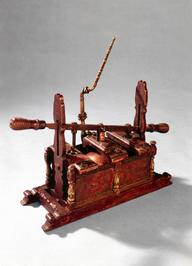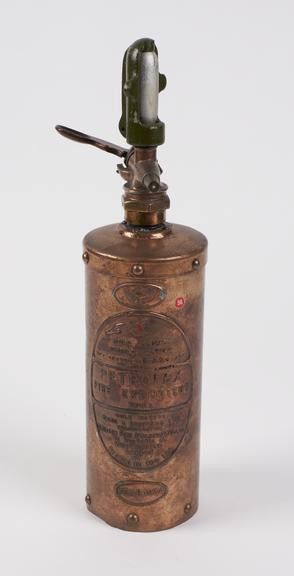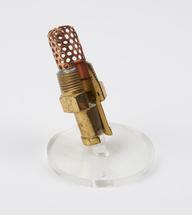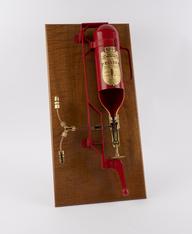

"Petrolex" Fire extinguisher, Type B, 1934
- Made:
- 1934

"Petrolex" Fire extinguisher, Type B, sparklet powered, by Read and Campbell Ltd, Incorporating the British Fire Appliance Co Ltd, 75 Victoria St, Westminster, London SW1. Rivetted copper construction, with Chubb Museum red '50' sticker.
Petrolex fire extinguishers contained a chemical called carbon tetrachloride to extinguish the fire. This chemical was commonly found in fire extinguishers historically but is rarely used in any capacity today due to its high level of toxicity.
The device also utilized pressurised C02 cartridges invented by Read & Campbell, two Scottish engineers, in 1881. Once the pressurised cartridges were pierced, the pressure within the device would expel the contents. The device emerged around 1911.
They were mainly marketed for automotive use, named ‘petrolex’ due to their ability to put out petrol fires. They gained a seal of approval from Royal Automobile Club’s testing on petrol fires. They were also capable of putting out electrical fires, gaining test approval from the North Metropolitan Electric Power Supply Company.




